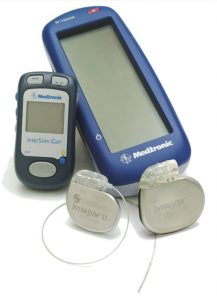Sphincter Repair
This procedure is carried out when the muscle of the anal canal, or sphincter has been torn. This injury most often occurs through vaginal delivery of childbirth. The tear may have been recognised at the time of delivery and repaired, or may not have been obvious, and thus not diagnosed.
A 3rd degree tear involves the injury to some or all of the muscle. A 4th degree tear involves a tear that also includes the lining of the anal canal wall.
There are occasions when a 3rd or 4th degree tear has been recognised and repaired soon after delivery, but it breaks down. In this scenario, a re-do of the repair is carried out, usually 3-6 months later, to allow all the scar and inflammatory tissue to settle.
Some people may be diagnosed with a “missed ” or “occult” sphincter injury in the first 6-12 months after their delivery , or later on in life when symptoms of faecal incontinence develop.
Repair of the sphincter requires a cut through the perineum, and dissection between the anus and vagina. The ends of the sphincter muscle are dissected then sutured together.
Sometimes a drain is left in the are for a few days to drain any excess fluid of blood. A catheter may be left in for 1-2 days for comfort. A pack may be left in the vagina and removed the flowing day.
You may be kept in hospital for a few days, with minimal activity. You will be able to eat and drink straight away, and often will be commenced of stool softeners. You will require analgesia, as this can be very uncomfortable.
It is important not to sit on too much, as this may increase the risk of wound breakdown. We generally suggest to shower and pat the wound dry, but not to soak in a bath. The wound is then dried with a hair drier and a dry pad placed between the buttocks to keep the wound dry.
The skin may ooze or the wound open up. This is not uncommon as this area is a difficult one to keep immobile. If the wound opens that does not mean the muscle repair has failed. Often the wound to heal over after a few weeks with simple dressings. If the wound has fully opened up early on sometimes it is repaired in theatre in an attempt to speed up the healing process.

